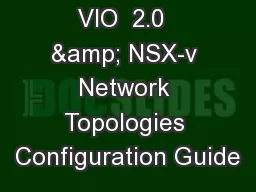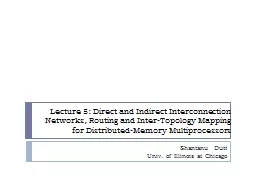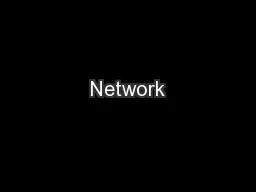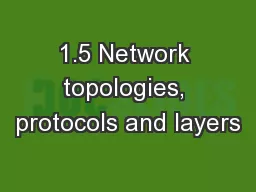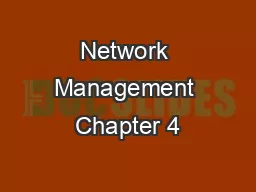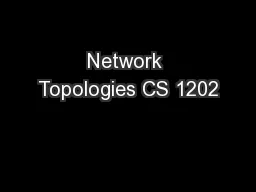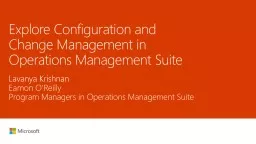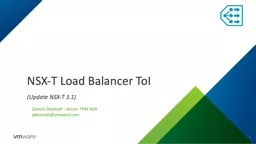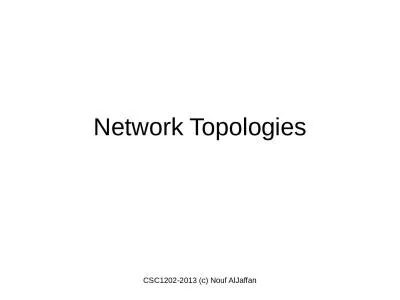PPT-VIO 2.0 & NSX-v Network Topologies Configuration Guide
Author : karlyn-bohler | Published Date : 2018-09-25
Dimitri Desmidt TPM ddesmidtvmwarecom Goal Get a very deep technical understanding on How to configure the different network and security services in OpenStack
Presentation Embed Code
Download Presentation
Download Presentation The PPT/PDF document "VIO 2.0 & NSX-v Network Topologies..." is the property of its rightful owner. Permission is granted to download and print the materials on this website for personal, non-commercial use only, and to display it on your personal computer provided you do not modify the materials and that you retain all copyright notices contained in the materials. By downloading content from our website, you accept the terms of this agreement.
VIO 2.0 & NSX-v Network Topologies Configuration Guide: Transcript
Download Rules Of Document
"VIO 2.0 & NSX-v Network Topologies Configuration Guide"The content belongs to its owner. You may download and print it for personal use, without modification, and keep all copyright notices. By downloading, you agree to these terms.
Related Documents

